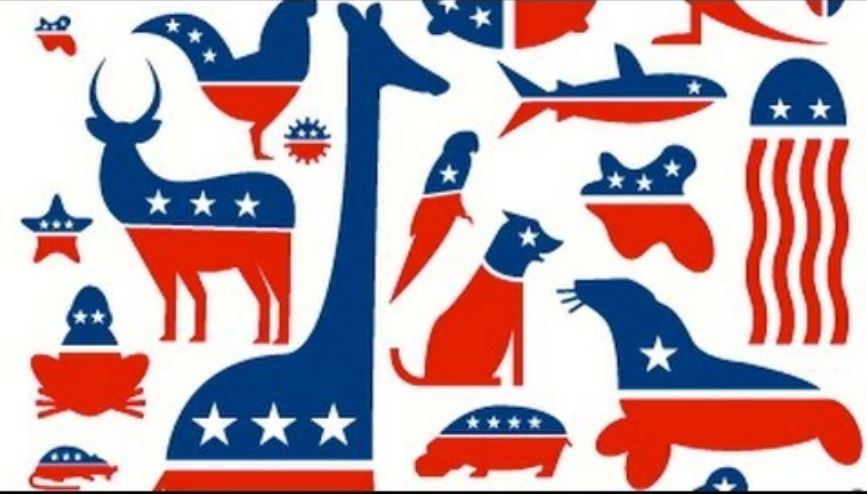Viewpoint: Third party voting in upcoming Presidential Election
October 4, 2016
With an election as infuriating as this year’s, more and more people are talking about third party voting. Yes, there are more candidates running for President of the United States than Hillary Clinton and Donald Trump. Former New Mexico governor and Libertarian candidate Gary Johnson as well as physician and Green Party candidate Jill Stein are actively campaigning to be Commander in Chief. Given our choices, I understand the desire to jump the two-party ship beyond the elephant and the donkey. Especially when the elephant is racist and you can’t trust the donkey. Trust me, I get it. There have been times when I’ve wanted to push my TV off a second-story window from having to hear about this year’s candidates. One in particular, but that’s a whole other article or perhaps a senior capstone project in itself. Voting for either one is going to be painful for many of us. For someone who is voting in a presidential election for the first time, I personally could not be more disappointed.
That being said, I am still voting under a major party. When I tell people this, they often believe they are somehow saving me by showing me their #Johnson2016 Facebook posts, as if they are “showing me the way.” First of all, these third party candidates are pretty abysmal too. The former New Mexico governor’s foreign policy knowledge is frightening (Aleppo who?) and Stein has some problematic anti-vaccine perspectives. Second of all, our system needs a complete overhaul until we are going to have a successful third party, let alone a third party presidential candidate. An election as crucial as the 2016 presidential race is not the time to politically experiment. In fact, this potential experiment would have virtually nothing to show once the data is collected. That is, other than the fact that people want change but do not yet have a system in which change is possible.
Our elections are still largely dependent on power and money. The unfortunate reality is that our major two parties are the only ones with those resources. Although third party candidates sometimes seem more politically centered than the polarized Democrats and Republicans, that political standpoint can also make it harder to gain votes. With a winner-take-all electoral college, as well as the rest of the deck stacked against third parties, the odds are relatively nonexistent. You may be saying, “What about Bernie’s average campaign donations of $27.00?” Well, Bernie ran as a Democrat. Also, don’t remind me of that beautiful man. Can’t you tell I’m grieving?
Voting for who you hate the least seems unfair and, frankly, sad. However, it is the reality of our political possibilities within our system. In fact, voting for who you hate the least is the most pragmatic way to vote in this election. Donald Trump is a misogynist and Hillary Clinton has an email problem, but if you think you’re going to rally the majority of the country (including politicians) around a candidate polling at less than ten percent a month before Election Day, you are kidding yourself.
The voice of the campus community is printed here by The Racquet.







otto • Oct 5, 2016 at 12:55 pm
Breaking News: Libertarian Ticket OVER, Will Now Focus On Beating Trump
otto • Oct 5, 2016 at 12:12 pm
A survey of Wisconsin voters showed 71% overall support for a national popular vote for President.
By 2020, the National Popular Vote bill could guarantee the presidency to the candidate who receives the most popular votes in the country, by changing state winner-take-all laws (not mentioned in the U.S. Constitution, but later enacted by 48 states), without changing anything in the Constitution, using the built-in method that the Constitution provides for states to make changes.
Every vote, everywhere, for every candidate, would be politically relevant and equal in every presidential election.
No more distorting and divisive red and blue state maps of pre-determined outcomes.
The bill would take effect when enacted by states with a majority of the electoral votes—270 of 538.
All of the presidential electors from the enacting states will be supporters of the presidential candidate receiving the most popular votes in all 50 states (and DC)—thereby guaranteeing that candidate with an Electoral College majority.
The bill was approved this year by a unanimous bipartisan House committee vote in both Georgia (16 electoral votes) and Missouri (10).
The bill has passed 34 state legislative chambers in 23 rural, small, medium, large, red, blue, and purple states with 261 electoral votes.
The bill has been enacted by 11 small, medium, and large jurisdictions with 165 electoral votes – 61% of the 270 necessary to go into effect.
NationalPopularVote
otto • Oct 5, 2016 at 12:09 pm
In ordinary plurality voting a vote cast for a splinter candidate generally produces the politically counter-productive effect of helping the major-party candidate whose views are diametrically opposite to those of the voter.
For example, votes cast for Libertarian Party candidate Bob Barr made it easier for Democrat Barack Obama to win North Carolina in 2008.
The current state-by-state winner-take-all system does not protect the two-party system. It simply discriminates against third-party candidates with broad-based support, while rewarding regional third-party candidates. In 1948, Strom Thurmond and Henry Wallace both got about 1.1 million popular votes, but Thurmond got 39 electoral votes (because his vote was concentrated in southern states), whereas Henry Wallace got none. Similarly, George Wallace got 46 electoral votes with 13% of the votes in 1968, while Ross Perot got 0 electoral votes with 19% of the national popular vote in 1992. The current system punishes third-party candidates whose support is broadly based.